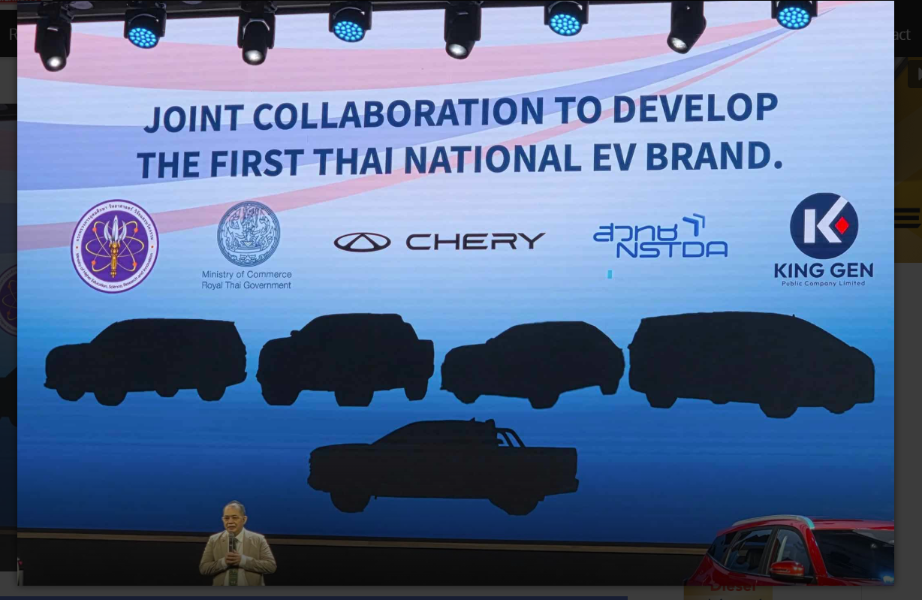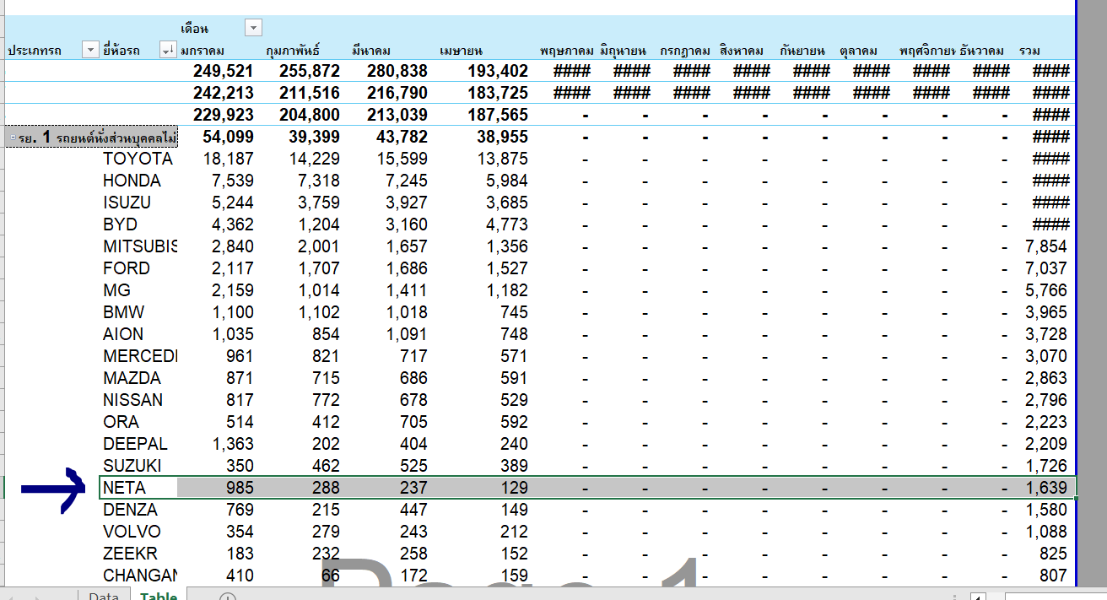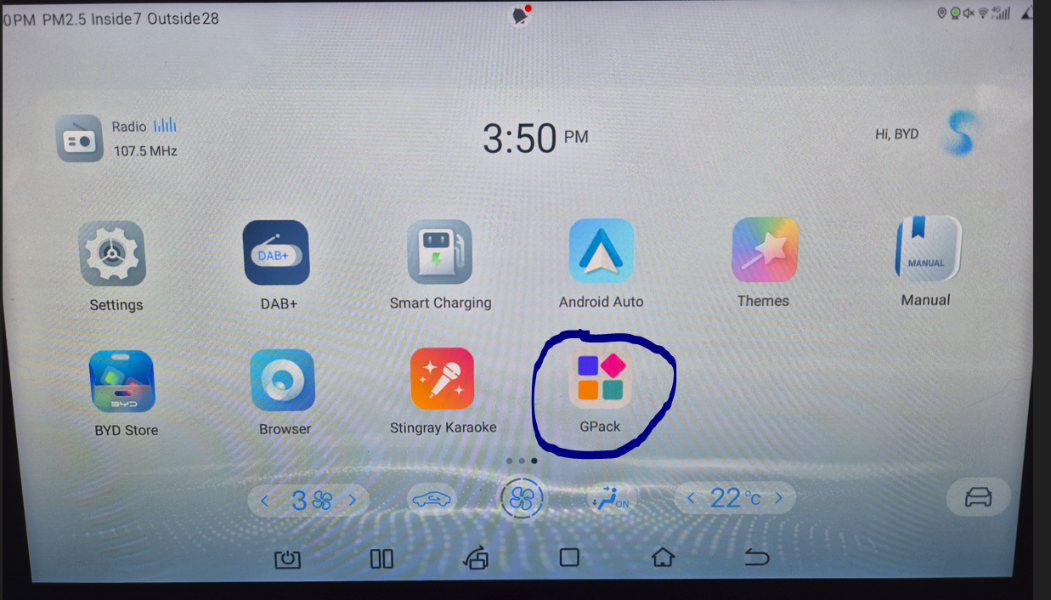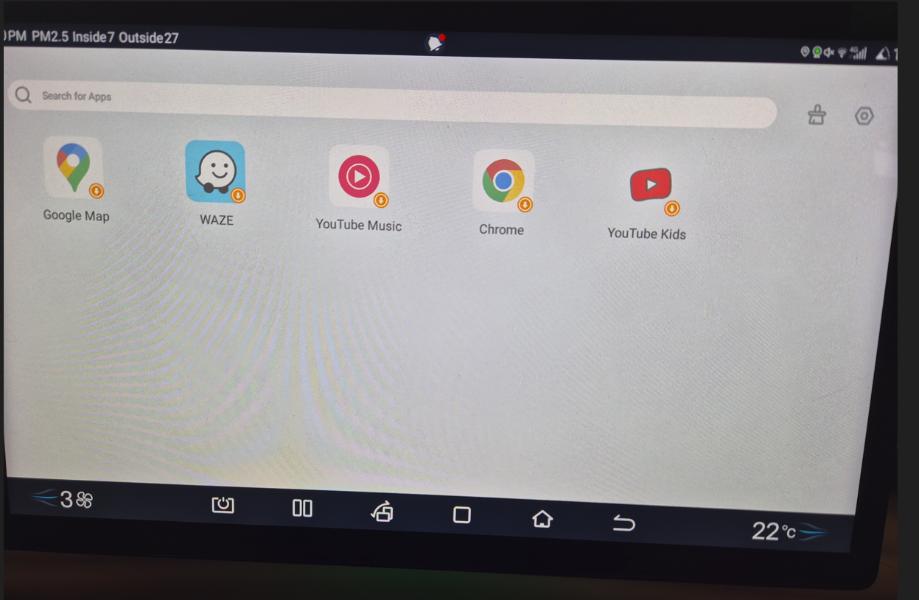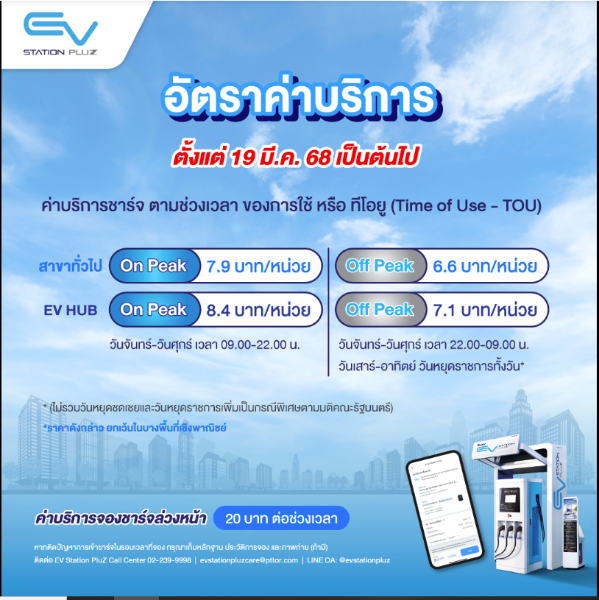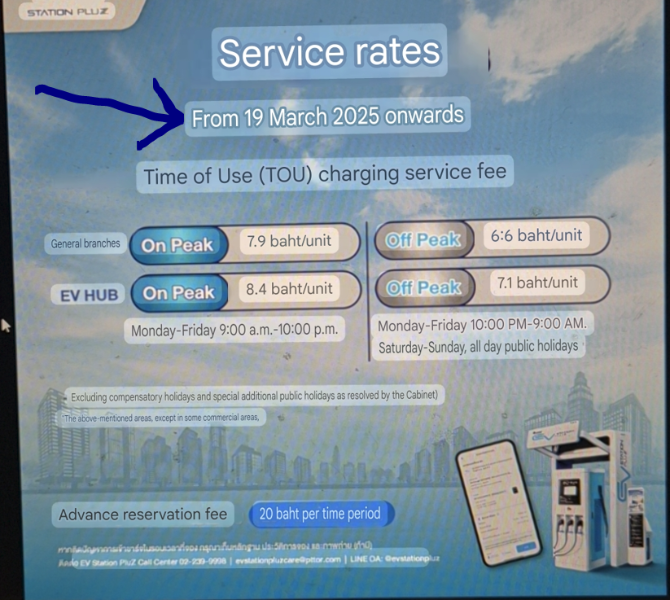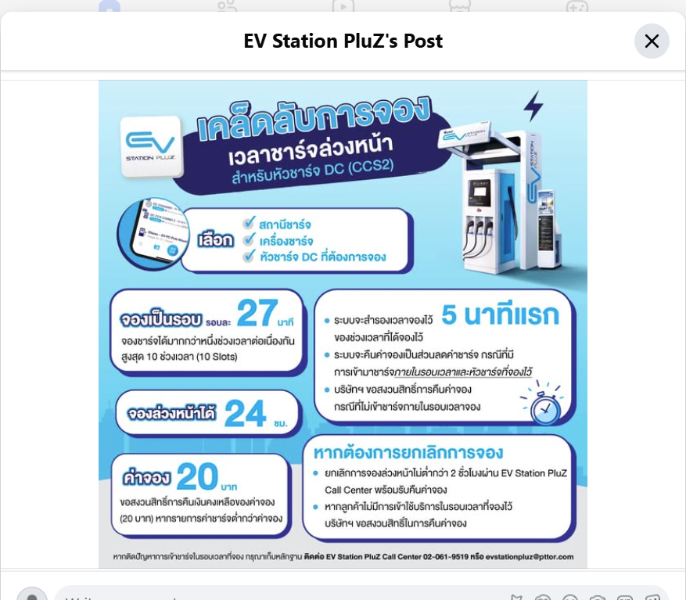-
Posts
29,128 -
Joined
-
Last visited
Content Type
Events
Forums
Downloads
Quizzes
Gallery
Blogs
Everything posted by Pib
-
Quick!!!!....book/reserve yours now! Sure hope the traction battery is not lead-acid. 😜 https://autolifethailand.tv/thailand-national-ev-brands-2025/ "Thailand's National Electric Vehicle Brand" will launch 3 new vehicle models by the Ministry of Commerce / CHERY / KING GEN / NSTDA. "Thailand's National Electric Vehicle Brand" will launch 3 new car models, jointly developed by the Ministry of Commerce / CHERY / KING GEN / NSTDA, produced in Thailand, using over 50% Local Content parts, opening the brand in Thailand by the end of 2025! "Thai National EV BRAND" MPV EV 100% electric Pick-up EV 100% electric 100% electric SUV EV That's all for today's details. Stay tuned... CHERY Automobile, a global leader in automotive technology, and OMODA & JAECOO have collaborated with the Ministry of Commerce to develop a Thai electric vehicle brand to elevate the Thai automotive industry to become an EV production hub in the ASEAN region. This collaboration aims to develop Thailand's national EV brand, promote domestic EV technology capabilities, and support domestic parts manufacturers to enter the global supply chain, focusing on sales in Thailand, highlighting the strengths of EV technology and affordable prices for Thai consumers. To support Thai people to switch to electric vehicles more easily, the project also uses the tax advantages as a “Thai car” to create a reasonable price system and stimulate the domestic production chain, from parts procurement, employment to the development of a more comprehensive after-sales service network in every region.
-
I agree that it appears the "cut-throat" battles in the price war are probably over. But I also think mini-battles, skirmishes, trench warfare, etc., will continue to be very noticeable among the Chinese manufacturers during this weak period of the Chinese economy, EV manufacturers jockeying for position (i.e., trying to get out in the front of the pack even for a short while...trying to get noticed), and the tariff war. Kinda like the Ukraine war that started off as a full scale invasion, a battle for survival but has now settled into trench (and drone) warfare. Like you said I do agree prices for entry level models in the half million baht ballpark seemed to have leveled out. But I don't think prices have bottomed-out yet for many "mid and upper price level EVs" because of many new models being released frequently which usually means seasoned models see a price cut. I think this model and price turmoil creates a scenario of plenty of "wait & see" thinking still going on in the EV world. In closing, I'm right in my thinking about 50% of the time due to the penny I flip. 😜
-
Yea....if ignoring Jan stats which has typically been a distorted registrations month due to previous year end of year sales/motor shows it does look like BYD is on a roll....even exceeding 2023 sales which was a hot selling year for EVs in general. BYD now has numerous more models in comparison to "earlier years" when it was pretty much by an Atto or Dolphin then adding Seal to that line-up. But now they also have the Sealion 7, Sealion 6 (a hybrid), and M6. More models and choices is probably behind BYD increasing sales....along with BYD now being the 4rd largest vehicle seller in Thailand behind Toyota, Honda, and Isuzu....and I expect this year BYD will probably move into the 3rd position when not even counting Denza which BYD owns and has separate registration stats.
-
Just took a look at the Thailand DLT "registration" stats for Jan - Apr 2025 and NETA sales are heading south. While Apr was not a great month for most car manufacturers when compared to the previous 3 months the NETA registrations had a big drop in Apr. So far for 2025 NETA registrations have been: 985 in Jan, 288 in Feb, 237 in Mar, and 123 in Apr. Jan is typically a good registrations month for pretty much every car manufacturer due to end of year sales typically during the previous Nov/Dec which don't possibly materialize into actual completed sales/registrations until a month or two later and then typically appear in the ensuing Jan registration stats like shown below. So, with all the recent news over the last few months regarding Neta's financial challenges and the typical registration pop in Jan, it might be best just to ignore Jan registration numbers to determine "current" potential customer buying sediment. Hopefully Neta pulls through but it will probably be the primary home market in China versus overseas markets like in Thailand that really determine Neta's future. From Thailand Dept of Land Transport (DLT) stats website
-
After reading above articles and below article it does not look good for Neta. Note below where it says domestics sales (i.e., in China its main market) was only 487 vehicles in Jan and Feb 2025 combined....that's a sure sign Chinese customers fear Neta is going to go belly-up....no one wants to buy a car which may lose ongoing support...become an outcast. I wonder what the actual government "registration" numbers (i.e., sale completed with blue book and red tags issued) have been over the last few months in Thailand for Neta? Bookings/reservations mean little if potential customers get scared the company might not survive and the customers back-out before committing to actually buying. https://carnewschina.com/2025/04/14/neta-auto-faces-escalating-crisis-as-dealers-drotest-at-factory-gates/ Neta’s domestic sales have plummeted dramatically. Data shows the company sold only 487 vehicles in January and February 2025 combined, with no disclosed sales figures for March. These numbers fall well below those of other Chinese EV brands that have already declared bankruptcy or exited the market. Current sales show minimal demand for its model lineup, with the Neta X accounting for just 272 units and the NETA L for 149 units during this period. As its home market collapses, NETA is increasingly pivoting to international markets, particularly Thailand. The company recently announced it received 1,219 orders during the Thailand Motor Show and has set an ambitious target of selling over 10,000 vehicles in Thailand in 2025, aiming to become the second-largest new energy vehicle brand in the country.
-
Whoops...typo...fat fingers on the keyboard...it's 126, not 127, individual blade batteries/cells in the Atto Extended Range 60.5KWH battery pack.
-
I think this is just part of Audi's "optional" Audi Connect Function on Demand which allows a person to buy "upgrades/more features" to certain functions on their Audi.....this program has been around for years. It's purely optional. It's kinda like if you want to pay for more ringtones on your smartphone, buy addtional stickers/emojis for some phone apps like LINE, upgrade to ad-free Youtube, upgrade the GPS map system, add more options for turn signals, etc...etc...etc. More and more electronics are now part of newer cars (EV and ICEV).....electronics which can do whiz-bang things and also connect to the internet.....opens up new revenue sources for car manufacturers. https://www.audiusa.com/en/inside-audi/innovation/audi-connect/audi-connect-function-on-demand/
-
No...I haven't got a chance to play with GPack....it's low on my list of things to do.
-
Funny you should mention an Riddara RD6 as one of my neighbor's on my 10 houses soi just drove to his house in a brand new, red tag Riddara RD6 truck....a green color that really catches your eye. The hum of its A/C was very obvious as it drove by me. He's in his front yard right now trimming some small trees....he comes by every few weeks for a few hours to check on the house as he's been trying to sell it for years (at a overpriced amount....which is why it hasn't sold yet)....his primary home is elsewhere in Bangkok. Throughout my large moobaan consisting of around 400 houses as I do my frequent dog walks around the moobaan I'm slowly seeing more and more BEVs parked in driveways....the transition from ICEV to EV is slowly and steadily continuing.
-
I just hope PTT does not decide to stop accepting debit cards like Elexa apparently has. Since PTT only has a card payment option (no QR code or wallet method) if they stop accepting debit cards and use of foreign "credit" cards for online payment can often result in the payment being declined then loss of PTT charging would be bad since they have the most chargers especially along major roads at many of their PTT dino fuel stations.
-
For those of you that are registered with/use the Elexa charging app I found out yesterday when stopping at an Elexa charger to do a few minutes test charge that now "before the charging begins" Elexa does a check of the credit/debit cards you have in your payment profile by doing a small charge/deduction which is immediately followed by refund of that small amount. If that fails you "can not" begin a charging session.....and the payment via QR Code/PromptPay is gone. Summary: you can not begin the charging session, whereas, before the payment process didn't come into pay until the end of the charging session. I have two of my foreign/US Visa credit cards loaded in my Elexa payment profile...these had been successfully added probably 6 months ago. And I use to have my Bangkok Bank Mastercard "debit" card loaded but removed/deleted it from my Elexa profile several months ago after a fraudulent transaction for a few hundred baht from a Spotify transaction occurred (Bangkok Bank did refund that fraudelent charge) and I got a new debit card. I did not reload that in Elexa as I don't want to load any cards whenever an app has payment by QR Code/Payment or a Wallet function....less chance of the card info getting into the wild (i.e., the system it's loaded in getting hacked). Since Elexa had a QR Code/PromptPay payment option I didn't reload my new debit card. Anyway, when trying to start a charge when Elexa tried the test of the credit card before allowing the charging to begin, both cards failed the Elexa test...Elexa said the transaction was declined and one of my banks did immediately send me notice of they declining this foreign transaction. So, I tried re-adding my Bangkok Bank debit card....the Elexa process to add the card appears to fo fine, to include transaction verification via OTP, and Elexa gives a popup message of success in adding the card to my payment profile and says it can take up to one minute for the card to appear in the profile but unfortunately it never appears in the payment profile....it's like the process actually failed although Elexa says it was succeessful. I retried adding the debit card several time yesterday and this morning....around 6 times total.....same result every time. I contact both Bangkok Bank and Elexa customer service today...English speaking reps...and it showed Bangkok Bank had "approved" the Elexa test transactions to add the card, but apparently that is when Elexa determines it's a "debit" card and apparently will no longer add a debit card to your Elexa payment profile....it only wants "credit" cards. The Elexa customer service rep said this policy change occurred in March and have apologized for any inconvenience this may cause. I expect March timeframe is probably when the Elexa app updated to the new payment process. The Bangkok Bank rep also told me other customers have been calling them with the same Elexa issue....that is, Elexa will no longer accept their Bangkok bank debit card. I expect it's really "any bank's' debit card" based on the what the Elexa customer service rep told me about Elexa's policy change in March. I sure appears this policy change kicks debit card usage to the curb. Oh, well, since Elexa now apparently only allows "credit" cards if your foreign card-issuing bank doesn't decline the transaction you are still good to go. And I expect there will be no problem with a Thai bank credit card. But if you had been using your Thai bank "debit" card or payment via QR Code/PromptPay to pay for an Elexa charging session at the "end" of the charging process, you might want to go check and see if your cards still works with Elexa. As mentioned the Elexa Customer Service rep said the policy change occurred in March 2025.
-
Today I had my Atto's 24 month/40,000Km checkup (actually I'm only at approx 19 months and a little over 39,000Km)....all free which Bt3,455 if I had to pay for it. I also as "optional" maintenance had the A/C "evaporator" coil cleaned...the evap coil is the one in/under the dashboard and not the A/C condenser coil in front of the radiator....price for A/C evaporator cleaning was Bt1,701 out of my pocket. Expect the cost would be very, very similar for a Seal. During the service checkup the BYD dealership uninstalled the inop Gbox and installed the replacement called GPack. I have not played with Dpack yet. Below are two snapshot showing GPack in its virgin state immediately after dealership install. Once your press one of the Dpack icon it ask you to log into your Google acct (expect this a one time thing)...then you could install apps and use them. The BYD rep did mention you can play Youtube videos while driving. That's all I know about DPack at this point in time....but it is now living in my Atto. Screen showing GPack icon Screen that appears after tapping above DPack icon. I expect these are just suggested apps to install....give you an idea....load more as desired/required.
-
FYI for everyone listening in, below webpage gives a layman's overview of the current 6 different levels of autonomous driving....levels 0 thru 5. https://www.zf.com/mobile/en/technologies/automated_driving/stories/6_levels_of_automated_driving.html And I wonder what level of autonomous driving the Jetson's car had? 😉 https://www.zf.com/mobile/en/technologies/automated_driving/stories/6_levels_of_automated_driving.html
-
Vehicle Import tariff of 10% "plus" a 20% VAT sure raises the price of a new car in the UK.
-
I expect the higher Sealion 7 price in Europe is primarily due to higher EU taxes/import tariffs on Chinese made vehicles as compared to Thailand taxes/import tariffs on Chinese products like vehicles that don't fall into the luxury category.
-
https://www.roojai.com/en/ Recommend you just go to roojai to get a "ballpark estimate. Now you may or may not get the best deal off roojai....an insurance broker can possibly get a better deal. Anyway, I used roojai a few minutes ago to check on the premium for a 2024 Dolphin extended range...I used a variety of answers to the questions such as age, years having an driving license, whether used for work travel or not, whether under finance or not, etc.,....I was getting an annual premium around Bt17K. Premiums will vary depending on each person....the answers given. When they ask when you want to start the policy try using "tomorrow" as the answer if you don't get a response to other dates. Once again, roojai may not give the best deal in comparison to other brokers....but it's a good site to get ballpark premium estimates.
-
19 March. And note the premium paid when charging at a PTT EV "HUB" station. The premium paid at a HUB station appears to be around 6 to 7% higher than at a PTT EV "regular" station.
-
"Where you say, "...To fast charge at 250KW you need some crazy thick cable......" you are right if the EV system is a 400V system. But if it's an 800V system then the cable/wiring size can be the same because the increase voltage level provides the increased power/KwH while the amperage level does not have to be increased. Wire size is driven by "amperage" and not voltage. Since Power (KwH) equals Voltage times Current (i.e, P=EI) if a charger cranks out 450V times 300A into the EV that is 135KW going into the EV. On a 400V system approx 450-475V is used to reach full/100% charge. But on an 800V system (which more and more EVs are slowing coming out with) using a 850V charging voltage at 300A (same amperage as on the 400V system) that pumps 255KW into the battery. The EV's physical electrical wiring size is primarily determined by the "amperage" which needs to flow thru its charging wires; you can basically keep the wiring the same size by increasing the voltage while maintaining the amperage level. Yeap...800V and even some 1000V charging systems which allow really high KW power levels is because the increased KwH is obtained from using an increased voltage level and not an increased amperage level.....that is, the P=IE reason. Increase power by increasing the voltage level (no need to increase wire size) and not the amperage level.
-
I've found DC charger efficiency to be in the 95 to 98% ballpark....and more typically in the 97 to 98% ballpark.....or said another way, there is around 2 to 5% DC charging losses. And for A/C 7KW/32A wall charger charging efficiency that's typically around 90 to 93%....a 7 to 10% loss. Now a small, mobile A/C charger like a 10A charger will only have a efficiency of around 85%. More about "losses" below. The loss comes not only from charging cable losses/heat (I2R) but also losses from the EV's battery management system (BMS) and EV cooling systems (water and A/C). Although the EV's onboard charger (OBC) which is used for AC charging the OBC is "not' being used during DC charging but the BMS system still needs to use some electrons which don't make it to the battery and the battery cooling system will also work as needed to keep the battery cool. And it's quite common for the electrical A/C compressor and radiator electrical cooling fan plus electrical water pump to operate at a low level when DC charging as DC charging does heat-up the battery a lot more than when A/C 7KW wall charging. This electrical A/C, fan, and/or pump electron usage will occur even with the EV turned off....and if it's a HOT day and you have already been driving for at least an hour to fully warm-up the battery then when you start the DC charging the AC/radiator fan/water pump electron usage is assured as the battery needs to be cooled as those electrons pour into the battery at a high amperage rate. Typically, that when the "Active Cooling......" wording comes on the display when DC charging...."Active Cooling......" is BYD's way of saying its turning on the electrical radiator fan, electrical water pump, and even the electrical A/C compressor when needed in order to cool the battery while DC charging as a lot of amps is going into the battery. Heck, even when A/C charging at 7-22KwH with the car turned off setting in your shaded carport the electrical radiator fan and water pump will operate at a low/slow level. You usually have to listen closely or open the hood to hear, feel, and/or see the usage. By see I mean the radiator fan turning intermittently. By feel you can fee the water flow thru the "chiller" heat exchanger. By hear I mean you can barely hear the water pump turning and the radiator fan turning intermittently. The electrical water pump which is very quite will still pump glycol/water thru the battery and radiator....and the radiator fan will come on intermittently at a low speed. All of this is using electrons which lowers the charging efficiency/cause losses when comparing what the charger says it's sending to the EV compared to what the EV's KwH display says is entering the battery. That loss is cable heat loss plus electrical water pump, electrical radiatorfan, and/or electical A/C electron usage (loss).
-
The consumption stats on BYD vehicles, like my Atto Extended Range, definitely use some BYD magic math....must have an algorithm that does "not" count or adjusts for certain electrical/battery electron usage. Kinda like cherry picking of stats. I've had my Atto Extended Range with 60.48KwH battery now for a little over 18 months and little over 39,000 Km (time to go schedule the 40,000Km checkup since it needs to be done plus or minus 1,000km of 40,000km or at 24 months plus or minus one month....whichever comes first) and have done a LOT of evaluation/tracking of electron usage to include using a lot of OBD2 data that gives a lot of detail. Even with all this evaluation/tracking my Atto has left me mystified at times in trying to figure out how BYD "figures" some of their electron usage stats. Like my Atto's consumption reading per 100Km has ranged from 12.6 to 12.8Kwh depending on the time of year. During the cooler part of the year it's 12.6Kwh..and during the hot part of the year like now it's 12.8Kwh. Now I'm talking the consumption readout/stats you get when going in the big/center dash display Energy section; I'm not talking the constantly changing KwH usage as you drive along on the speedometer display. I do think the speedometer display reflecting real time KmH usage is accurate but the comsumption info in the center display uses magic math/cherry picking math in my opinion. Now if I divide 12.6 into 60.48 (my battery is a 60.48KwH battery) that equates to 4.8......multiply 100Km times 4.8 and I get a range of 480Km which also just happens to be the Atto's NEDC range 480KmH. And whenever I charge to 100% with the range estimation set to Standard mode I get 480KmH range readout each and every time...not 479 or less or 481 or more....always exactly 480KmH in Standard range mode. Now set it to Dynamic mode and I get a range estimate of 490 to 495 at 100% charge which is also a pie-in-the-sky estimate. And if using 12.8 that equates to 472KmH range. 472, 480 and 49XKmH range estimates are "in your dream" estimates....probably possible if driving "without" A/C, in ECO mode, driving very conservatively, no headwind, and minimizing/avoiding any stop-and-go traffic jam and over 90KmH driving....that is, perfect driving conditions. I expect even if the battery's SOH was 70%,a 100% charge would still give me a 480KmH range reading in Standard range mode when charged to 100% although the "real-world range" will be significantly less. Like real-world I get a range of 420 to 442KmH if staying below 90KmH and also avoiding Bangkok horrendous traffic where a ton of stop and go is involved....both exceeding 90KmH and doing a lot of slow, red light stop-and-go driving eats significantly more electrons than cruising along between 30-90KmH. I think for the Atto around 50-80KmH is its sweet spot for best range. Best range is during the cooler part of the year; worst range during the hottest part of the year. I drive conservatively, in ECO mode, and A/C set to 22C. And I think a lot of people think a lot of red-right, slow driving will give the best range...oh no, it will not as it takes more energy to get a vehicle moving from a dead stop compared to already moving....and also regen braking typically is not engaged/working at around 15KmH or less like you would experience in stop-and-go, really slow moving traffic like often found on many big city roads. Yeap, BYD uses magic math for some of its electron usage stats....cherry picking to make energy use look really good on the surface but is not really experienced in real world driving. And it really not just BYD doing this as all car/truck manufacturers, EV and ICEV, give range stats obtained in laboratory type driving conditions and not real world driving conditions. Preaching to the choir I know. ...
-
Is that the screen that displays for a few seconds when turning off the car? And if it is that screen then that screen resets each time to display the next driving event which starts when turning on the car and end when turning off the car. Did you drive for 11.1 hours without ever turning off the car? And since the Atto Extended range has a max range NEDC range of 480Km I kinda doubt your Atto has a 799Km range on a full tank of electrons with a full tank being 60.5Kwh for an extended range model and as mentioned a range of 480Km NEDC range (420Km WLTP). But then again, maybe you were driving downhill with a tailwind for 11 hours. 😉 I have an 2023 Atto Extended range and really scratching my head on your snapshot.
-
PTT has 12 EV charging "hubs" as of today/3 May 2025. You can see the locations around Thailand by going into the PTT EV Station Pluz app, selecting the map icon, and then enter "hub" in the search bar. PTT is adding charging stations at a fast clip. Seems any "new" PTT station of medium to large size comes with chargers...and old PTT stations are installing chargers at a fair clip also. When a person gets an EV registering with the PTT EV Station Pluz app is probably the first charging app they should register with as PTT has many DC chargers around the country....just like they have many petrol stations. The only downside to the PTT EV Station Pluz app is it only allows payment via debit/credit card (card payment can be problematic at times if your card is rejected) versus also allowing a QR Code/PromptPay payment option. Having a Wallet capability with QR Code/PromptPay top-up option is also missing from the PTT app. The PTT app should definitely expand payment options vs only having a card payment option.
-
The chargers at BYD showrooms are "not" exclusively for BYD owners. Anyone who installs/registers the ReverSharger charging network app can use the chargers at the BYD showrooms. And this also gives charging access to quite a few Shell Sharger chargers at Shell Stations....chargers at SUSCO stations Now if a person owns a BYD vehicle it can be setup to automatically Plug & Charge versus needing to press an extra link or two on the app while charging. Really, Rever just joined forces with Sharger to form the ReverSharger charging network. https://play.google.com/store/apps/details?id=com.sharge.shargeapp&hl=en
-
The larger one is the radiator that has water/glycol running thru it....a water pump is moving the water/glycol solution. The smaller one in front is the A/C condenser which has refrigerant (i.e., freon) running thru it...being fed by the A/C compressor.
-
If the person who has booked a time slot does "not" begin charging within 5 minutes of the reservation start time then that reservation slot is lost (along with the reservation fee) and changes to available for walk-in. That is, a walk-in could pull-in, hook-up and use the slot. Like if I had a 7:00 to 7.27 slot but didn't arrive/begin charging with 7:00-7:05 then "after" 7:05 that slot changes to available for walk-in (i.e., I lost the reservation). Do a google translate on the portion of the image below which has the stopwatch


